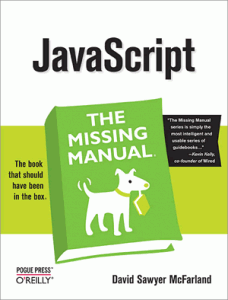While at the 2011 InControl Conference in Orlando, FL I sat down with Dave McFarland who was there giving a workshop on jQuery. We all use jQuery or at least have tinkered with it so I just had to ask him a bunch of stuff about what he thinks about it and why he’s into it so heavily.
Why the focus on jQuery?
 Dave was asked by O’Reilly to write a book on JavaScript, he thought that while it would be awesome, to truly give people something they could use, that is apply directly to their day to day work, he should instead focus heavily on jQuery, with a good intro to JavaScript. So that you could have direct take-aways from the book. Thus we have JavaScript/jQuery the Missing Manual. (You’ll have seen these books in stores before i’m sure because of the little dog on the cover.)
Dave was asked by O’Reilly to write a book on JavaScript, he thought that while it would be awesome, to truly give people something they could use, that is apply directly to their day to day work, he should instead focus heavily on jQuery, with a good intro to JavaScript. So that you could have direct take-aways from the book. Thus we have JavaScript/jQuery the Missing Manual. (You’ll have seen these books in stores before i’m sure because of the little dog on the cover.)
Why is jQuery so dang popular?
Unlike just writing straight up JavaScript, jQuery has designers in mind. It’s built off of using selectors we as front-end designers already have a solid grasp of so it fits well naturally in our brain. Another reason is jQuery strong leadership from people like John Resig. Now it’s huge community is probably the driving factor that keeps jQuery relevant and top of the heap.
About Dave McFarland
Dave McFarland, sawmac.com & on Twitter @davemcfarland, has been a web designer/developer since 1995. He’s been the Web master at the University of California, Berkeley and oversaw a complete CSS-based redesign of Macworld.com. Dave has authored several book on web design & development including: JavaScript: The Missing Manual and Dreamweaver: The Missing Manual, he’s a regular columnist at CreativePro.com. He is also a teacher in the multimedia program at Portland State University.




jQuery is awesome to work with.
Excellent work…